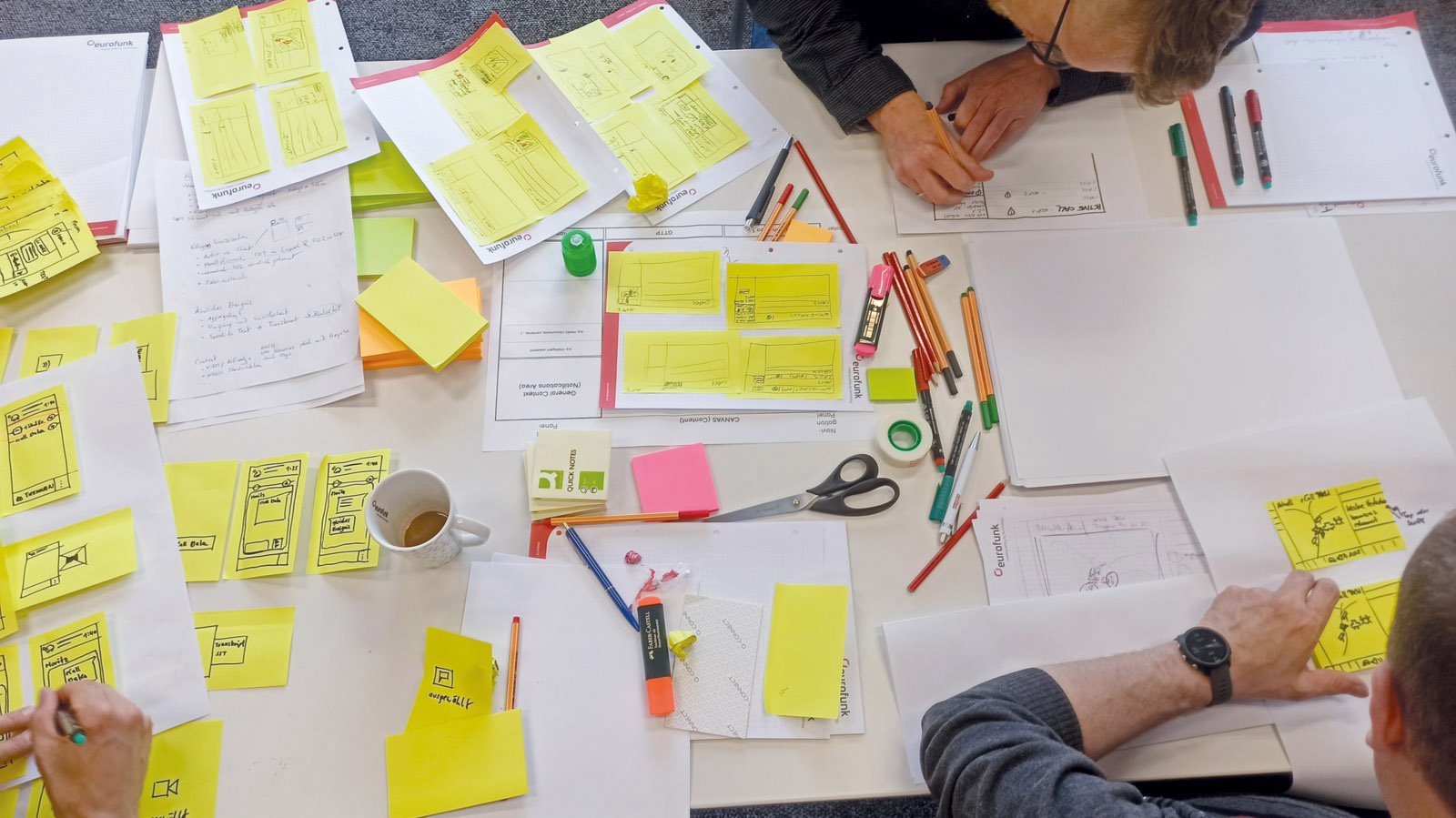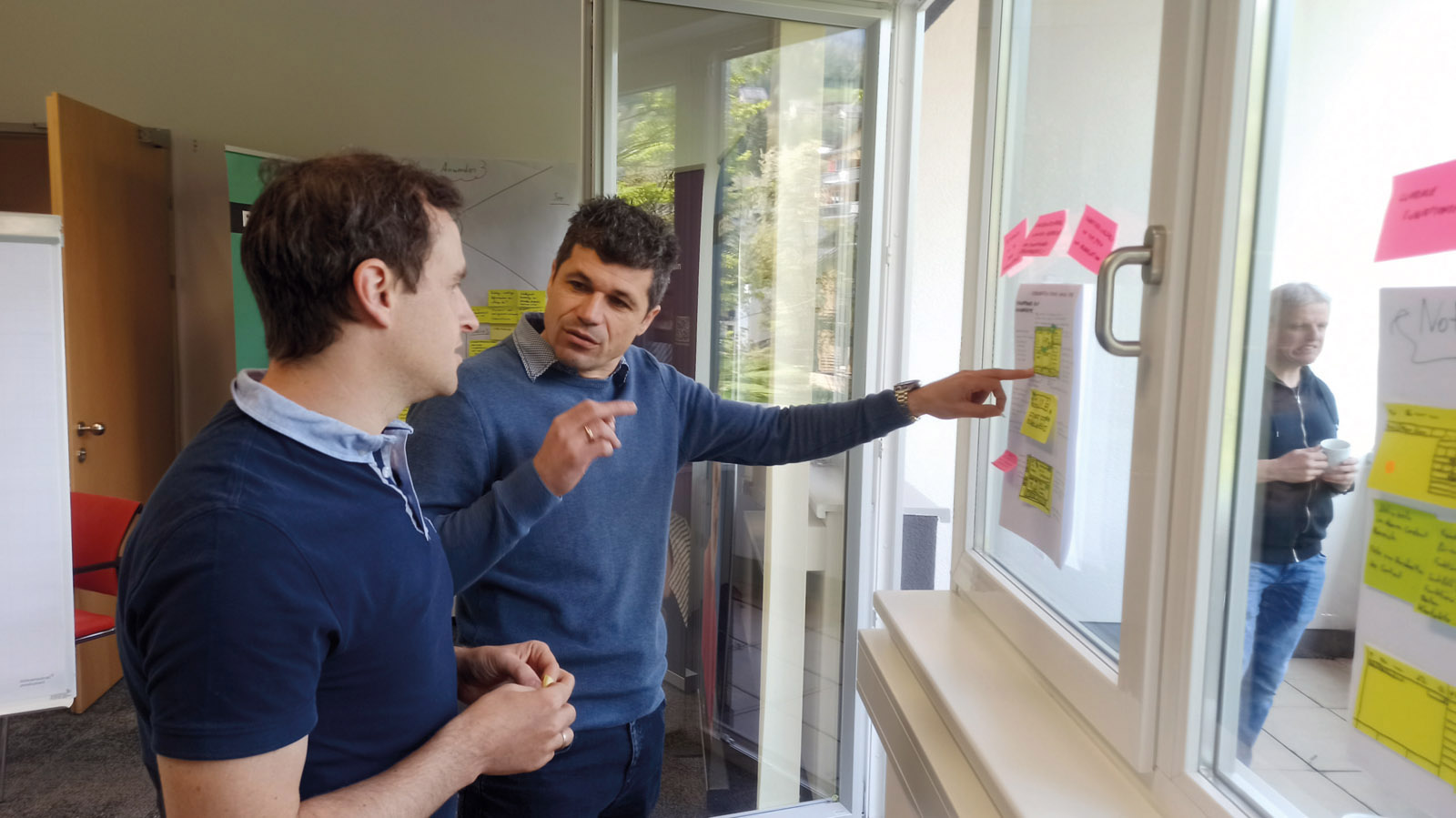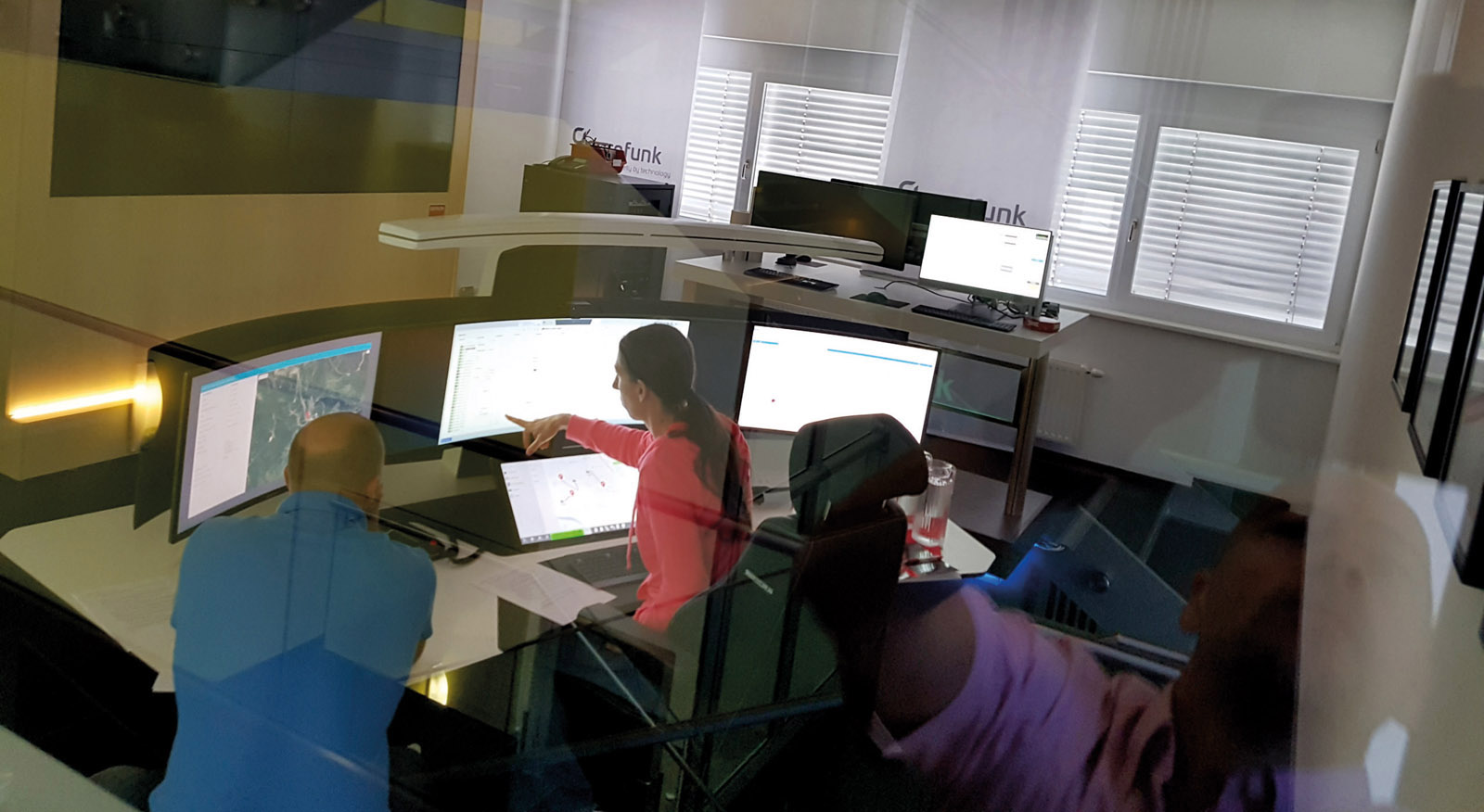Design sprinting to new products
Have you ever had a promising idea that for various reasons – too risky, too challenging, too uncertain – was never implemented?
We in product development have too – many times. Even when considerations like requirements, framework, and cost-benefits are clear, the decision to incorporate new or innovative ideas into the product can be complicated by considerations that are less so: the solution, the risk or simply the unknown.

Typical flow of a Design Sprint week
Focus on the highest potential and the highest risk
This is where eurofunk’s Design Sprint comes in. A design sprint is an effective way to look into the future, pre-evaluate possible solutions for challenging tasks or long-term goals, and address concerns about potential problems. The focus is on both risks and opportunities.
Test new ideas and solve problems in just five days
In a Design Sprint, representatives from areas such as development, UX design, sales, consulting, and management are entrusted to work as a Design Sprint Team to fulfil a specific long-term goal. In doing so, they can draw on their own expertise and that of so-called subject matter experts. The undertaking has a strict time frame and extends over five intensive but unifying, exciting and productive days.
Day 1 – Define, analyze and understand goals
The first day is spent defining long-term goals which result in what we call sprint questions. Sprint questions in turn ensure that, once answered, the solution that is decided on at the end of the process is the solution that also fulfils the long-term goal. In addition, a user-workflow is defined which maps the relevant interaction steps of the user in this context. On day one, Design Sprint Team members try to get as much input as possible from other stakeholders and subject matter experts to answer any open questions. Questions about context are researched in advance through user observation/surveys.
Day 2 – Generating and sketching ideas
Based on their own know-how and the input of their colleagues, the Design Sprint Team spends day 2 generating a number of solutions to answer the questions defined on day 1.
Working in sketch form, each member of the team draws upon his or her particular background or perspective in order to create a solution independently. The result of this process is a large, innovative ideas pool from which the solution design can be derived.

The Design Sprint Team in its creative phase

Firm decisions are a key factor
Day 3 – Decision making and script development
The creative output from the previous day is exhibited in a gallery and released for viewing and evaluation. The process involves all team members and the evaluation includes singular aspects of each of the proposed solutions. Once a consensus is achieved and a preferred set of ideas is agreed upon, the proposals are arranged in a so-called storyboard using the workflow as a corridor. This storyboard is the basis for the creation of the prototype and also the framework for the task on day 5 (evaluating).
Day 4 – Creating the prototype and test setup
In order for the proposals to be tested, they must first be put into some kind of tangible form. For this purpose, a click prototype – a cost-effective, efficient method for linking user interface mockups together – is created for a well-defined task on the basis of the storyboard. By clicking on corresponding elements and accessing the next UI-layers and functions, the user can click through the design in a very realistic manner.
Day 5 – Evaluate solution
Day 5 is the high point of the week and the day of truth. This is when, ideally, we invite real users with control center experience to use the prototype to accomplish a given task. A designated test leader accompanies the testers while they complete their task and the work is observed remotely by the Design Sprint Team. It is at this point that the effectiveness of the solution becomes clear: can the task be completed or does the test person have different expectations? Are they having trouble finding information or functions? Are they becoming confused or even frustrated?

The Design Sprint team records all findings from the evaluation

Day of truth: The concept is tested using real users
Our focus is on the users
The final day brings a high degree of certainty as to whether the design will be effective or not. If the right sprint questions are asked, we can assume that potential risks will also be significantly reduced. Needless to say, it is not possible to answer all questions and minimize all risks. But here too, we have options: either we decide to live with the residual risk or we follow up with another, shortened Design Sprint.
Of course, it is also possible that the chosen solution is less than ideal or may even be considered to have failed. We don’t necessarily view this a negative however, because the process has given us valuable insight into things that don’t work.
The Design Sprint shows us the good and the bad: it lets us implement innovative ideas and it gives us the opportunity to recognize problems early so that we can avoid adverse consequences such as lost time, wasted money or the dissatisfaction of our customers.
A Design Sprint is significant when it comes to stakeholder commitment and the uniform understanding of all participants. This is a potent combination that invariably leads to a positive conclusion. Properly implemented, a Design Sprint is not just hype, it is – together with agile product development and user research – an essential methodology for innovative product development.

